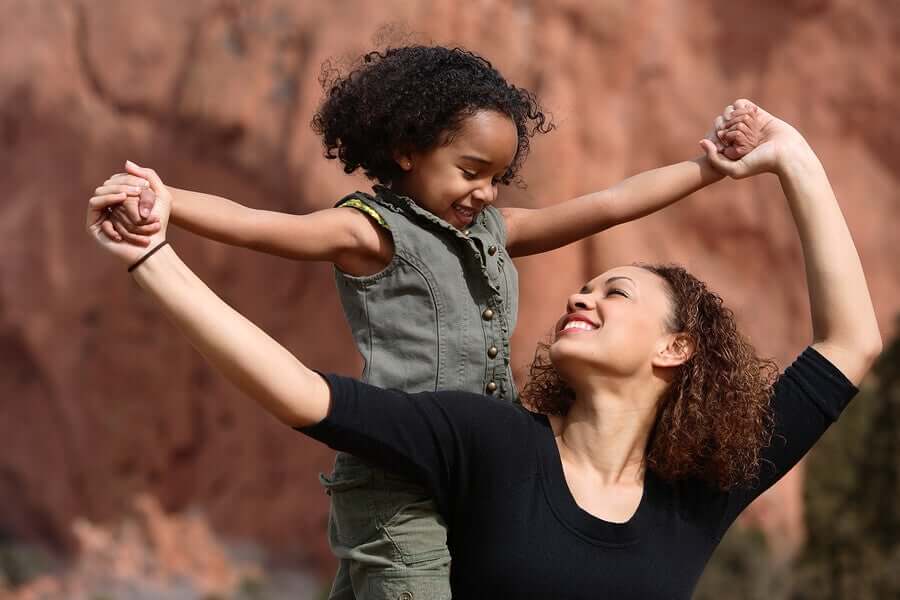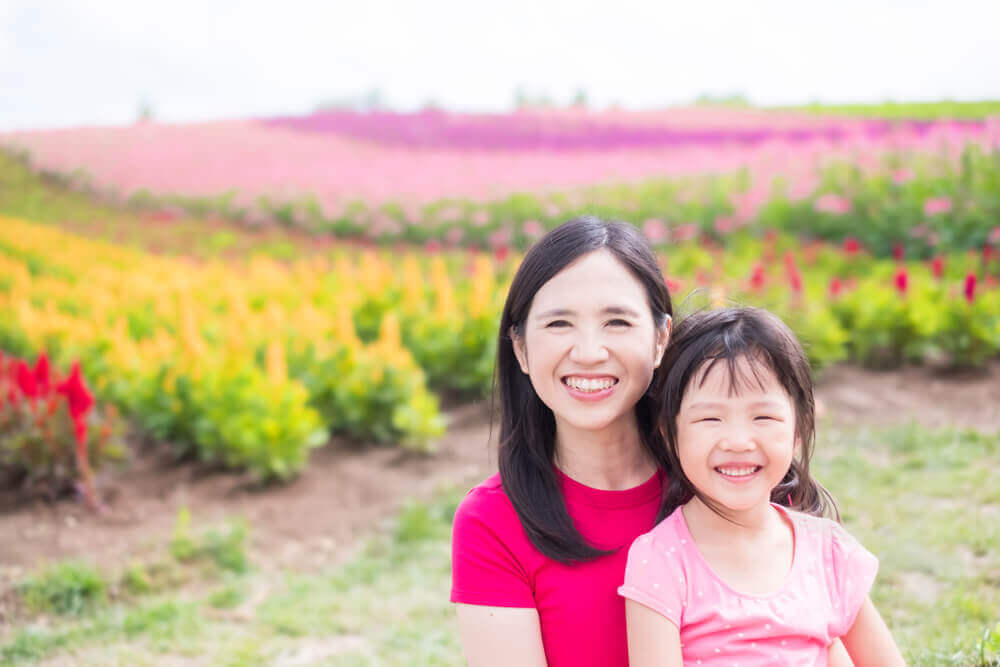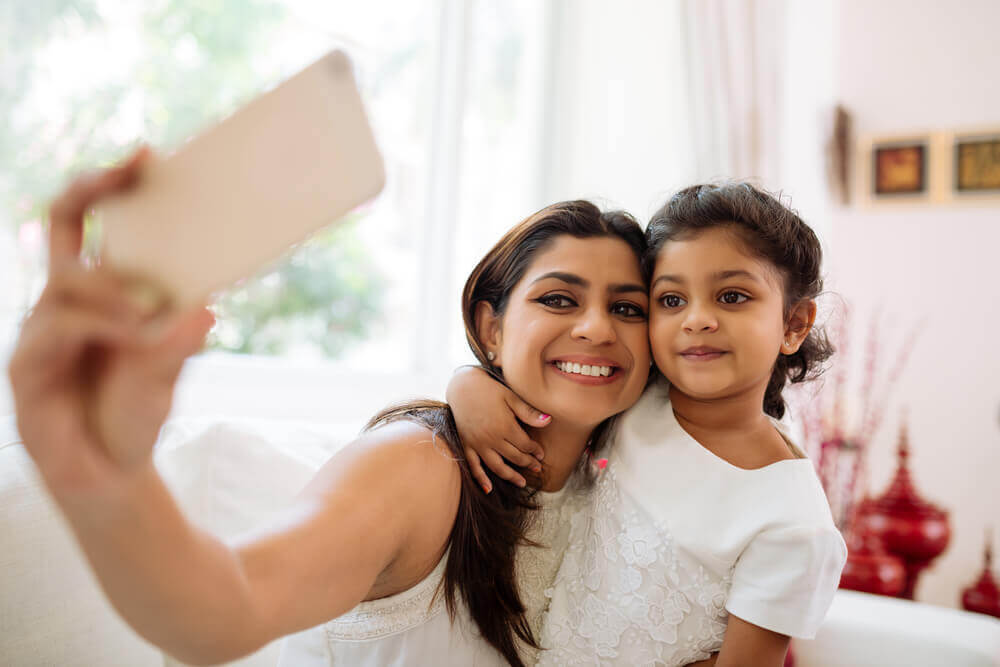Motherhood in Different Cultures Around the World

Without a doubt, motherhood is an essential life event for women and society across the globe. Yet motherhood in different cultures takes on different forms. Even though it may seem universal, ideas about motherhood vary greatly, both around the world as well as in your own environment.
Motherhood in different cultures: social construct
Certainly, motherhood is a biological occurrence that only affects women. However, nowadays, anthropologists are studying motherhood as a cultural construction that’s a general and universal biological occurrence.
Doctor in anthropology Ángeles Sánchez states that motherhood isn’t just reproducing with your body. In fact, every culture has a sociocultural construction. Therefore, it’s a psychosocial event.

It’s easy to see that motherhood is a biological and cultural event by seeing what motherhood looks like in different cultures around the world.
Women’s support in Kenya and Tanzania
In the tribes of southern Kenya and northern Tanzania, there is a lot of female social support. For example, this happens in the Maasai and Swahili tribal groups. These women gather around new mothers during their first few days of motherhood.
From the moment of delivery, new moms are surrounded by women. Then, men disappear during the first few weeks of motherhood. In the Swahili tribe, the couple sleeps in separate rooms for 40 days after childbirth.
On the other hand, in the Maasai tribe, all of the women in the village attend the births. Then, the men wait at the house of the mother’s mom. For the next two months, the rest of the Maasai women help the new moms by doing their tasks and responsibilities for them.
Traditions and customs in China and Japan
In China, the strong attachments to traditions means that today, they still practice zuò yuè zi. During the first month after giving birth, the mother and baby need to stay in the hospital or at home to protect the newborn’s health.
Another tradition is focused on the hygiene of the mother, who must wait until after the postnatal period to bathe. Regarding food, during pregnancy, women need to avoid foods that they consider hot, like eggs, and eat cold foods, like fruit.

In Japan, men play a somewhat foreign role during pregnancy. In fact, they don’t go to doctor’s appointments or pregnancy courses. Even in some Japanese hospitals, men aren’t allowed to enter during childbirth.
After the first month, the Japanese people celebrate a very important tradition: the Miyamairi. It involves taking the baby to a Shinto temple for the first time and performing a ceremony to celebrate the baby’s birth. In it, they ask for the baby to grow up strong and healthy.
The late motherhood of the West
Women in today’s Western Europe are very different from those just a few decades ago. Motherhood in particular has changed.
Now that motherhood isn’t linked to marriage, women who want to be moms first try to be professionally and financially stable. This inevitably leads women to have babies at an older age.
In this context, it’s common for families to have very few children. This is because families’ goals have changed. They don’t want to have a lot of kids, but rather to give them a quality life.
Motherhood in different cultures: what is the best country to be a mom?
In 2015, the NGO for children Save the Children published the 16th annual report of the State of the World’s Mothers. It analyzes health inequalities among the world’s major cities. In addition, it assesses the wellbeing of mothers and children in 179 countries.
The results of this report show that Norway is the best country to be a mother, followed by Finland and Iceland. As for the countries at the bottom, it shows that Somalia is the worst.
The researchers base this report on several factors, such as mothers’ health, as well as the risk of mothers dying from pregnancy or childbirth. In Norway, 1 in 12,160 women die from maternal causes, while in Somalia, 1 in 30 die.
“We need to do more to make sure that all mothers and babies have a fair chance of survival and a happy, healthy life, no matter where they live.”
–Carolyn Miles–

Final thoughts on motherhood in different cultures
Without a doubt, motherhood in different cultures varies around the world. However, you don’t need to compare other cultures to observe the differences. In your own context, the idea of motherhood is surely changing and evolving constantly.
Professor Cándida Alamillos explains that, in the current transition period, society demands different family models. In addition, they’re changing how they see gender roles.
Undoubtedly, despite the fact that families have different characteristics, diversity in motherhood gives us the hope we need to make all ways of life more fair and equal.
Without a doubt, motherhood is an essential life event for women and society across the globe. Yet motherhood in different cultures takes on different forms. Even though it may seem universal, ideas about motherhood vary greatly, both around the world as well as in your own environment.
Motherhood in different cultures: social construct
Certainly, motherhood is a biological occurrence that only affects women. However, nowadays, anthropologists are studying motherhood as a cultural construction that’s a general and universal biological occurrence.
Doctor in anthropology Ángeles Sánchez states that motherhood isn’t just reproducing with your body. In fact, every culture has a sociocultural construction. Therefore, it’s a psychosocial event.

It’s easy to see that motherhood is a biological and cultural event by seeing what motherhood looks like in different cultures around the world.
Women’s support in Kenya and Tanzania
In the tribes of southern Kenya and northern Tanzania, there is a lot of female social support. For example, this happens in the Maasai and Swahili tribal groups. These women gather around new mothers during their first few days of motherhood.
From the moment of delivery, new moms are surrounded by women. Then, men disappear during the first few weeks of motherhood. In the Swahili tribe, the couple sleeps in separate rooms for 40 days after childbirth.
On the other hand, in the Maasai tribe, all of the women in the village attend the births. Then, the men wait at the house of the mother’s mom. For the next two months, the rest of the Maasai women help the new moms by doing their tasks and responsibilities for them.
Traditions and customs in China and Japan
In China, the strong attachments to traditions means that today, they still practice zuò yuè zi. During the first month after giving birth, the mother and baby need to stay in the hospital or at home to protect the newborn’s health.
Another tradition is focused on the hygiene of the mother, who must wait until after the postnatal period to bathe. Regarding food, during pregnancy, women need to avoid foods that they consider hot, like eggs, and eat cold foods, like fruit.

In Japan, men play a somewhat foreign role during pregnancy. In fact, they don’t go to doctor’s appointments or pregnancy courses. Even in some Japanese hospitals, men aren’t allowed to enter during childbirth.
After the first month, the Japanese people celebrate a very important tradition: the Miyamairi. It involves taking the baby to a Shinto temple for the first time and performing a ceremony to celebrate the baby’s birth. In it, they ask for the baby to grow up strong and healthy.
The late motherhood of the West
Women in today’s Western Europe are very different from those just a few decades ago. Motherhood in particular has changed.
Now that motherhood isn’t linked to marriage, women who want to be moms first try to be professionally and financially stable. This inevitably leads women to have babies at an older age.
In this context, it’s common for families to have very few children. This is because families’ goals have changed. They don’t want to have a lot of kids, but rather to give them a quality life.
Motherhood in different cultures: what is the best country to be a mom?
In 2015, the NGO for children Save the Children published the 16th annual report of the State of the World’s Mothers. It analyzes health inequalities among the world’s major cities. In addition, it assesses the wellbeing of mothers and children in 179 countries.
The results of this report show that Norway is the best country to be a mother, followed by Finland and Iceland. As for the countries at the bottom, it shows that Somalia is the worst.
The researchers base this report on several factors, such as mothers’ health, as well as the risk of mothers dying from pregnancy or childbirth. In Norway, 1 in 12,160 women die from maternal causes, while in Somalia, 1 in 30 die.
“We need to do more to make sure that all mothers and babies have a fair chance of survival and a happy, healthy life, no matter where they live.”
–Carolyn Miles–

Final thoughts on motherhood in different cultures
Without a doubt, motherhood in different cultures varies around the world. However, you don’t need to compare other cultures to observe the differences. In your own context, the idea of motherhood is surely changing and evolving constantly.
Professor Cándida Alamillos explains that, in the current transition period, society demands different family models. In addition, they’re changing how they see gender roles.
Undoubtedly, despite the fact that families have different characteristics, diversity in motherhood gives us the hope we need to make all ways of life more fair and equal.
All cited sources were thoroughly reviewed by our team to ensure their quality, reliability, currency, and validity. The bibliography of this article was considered reliable and of academic or scientific accuracy.
- Afrikable (2012). Testimonios por tribus. Kenia: Lamu. Recuperado de: https://www.afrikable.org/que-hacemos/maternity-home/testimonios-partos-por-tribus
- Alamillos, M.C. (2016). La maternidad tardía: expresión contemporánea del patriarcado occidental. Revista de Antropología Experimental. nº 16, 15: 213-221. España: Universidad de Jaén.
- Save the Children. Estado de las madres del mundo. Recuperado de: https://www.savethechildren.net/state-worlds-mothers-2015
- Sánchez Bringas, Ángeles (1996). La construcción social de las masculinidades. Revista Política y Sociedad. n 32 pp. 151-160.
This text is provided for informational purposes only and does not replace consultation with a professional. If in doubt, consult your specialist.








